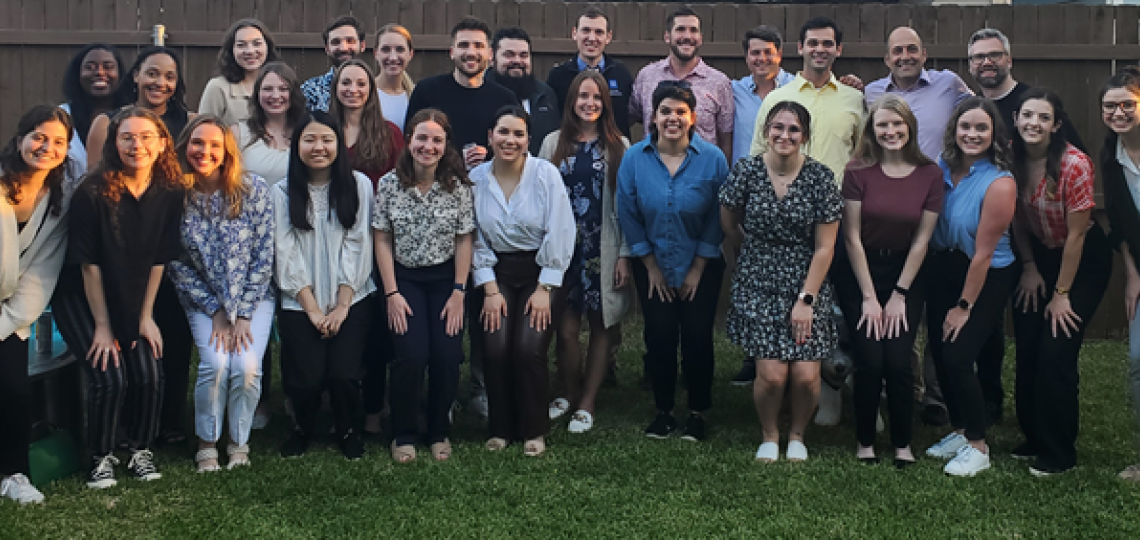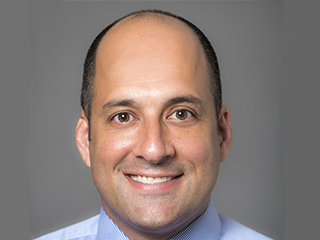
About the Core
The Clinical outcomes measure sub-core seeks to expand upon existing infrastructure for clinical phenotyping at BCM to give IDDRC investigators enhanced access to the expertise and services for clinical phenotyping and “deep phenotyping” of human subjects with IDD. As part of the Human Phenotyping and Neuropsychiatric Measures Sub-Core, investigators will have access to clinical phenotyping using neurobehavioral, neuropsychological, and neuropsychiatric assessment tools, comprised of questionnaire-based methods, structured clinical interviews, and task-based measures; and, novel quantitative methods, including computer vision based techniques for quantifying dynamics of facial expression, posture, and gaze ("automated multimodal analysis"), and bio-behavioral sensing, to move beyond traditional assessment approaches.
Available Services
- Consultation about assessment battery
- Assessment planning and/or implementation
- Scoring and interpretation
- Collaboration on grants and manuscripts
Examples of Assessment Services within the Core
RDoC Domains | Behavior | Self Report | Paradigms |
Negative Valance System | Northwick Park Examination of Cognition, Automated multimodal analysis of affect | Anxiety Disorders Interview Schedule for Children, Behavioral Inhibition, Avoidance Scales, Child Behavior Checklist, Adult Self-Report | Trier Social Stress Test, Predictable-shock, Unpredictable-shock Task, Acoustic Startle |
Positive Valance System | Automated multimodal analysis of affect, reward related speeding | Positive and Negative Affect Schedule, Aberrant Behaviors Checklist | Problematic Reward Task, Effort-Expenditure for Reward Task |
Cognitive Systems | Woodcock-Johnson Test of Achievement, Wechsler Intelligence Scale for Children-V, Stanford-Binet Intelligence Scales, Fifth Edition, Sensory Gating | Behavioral Rating Inventory of Executive Function, 2nd Edition | Go/No go, Stop-Signal Test, Two-Choice Impulsivity Paradigm, Attention Network Task, Resting-State EEG |
Social Processes | Autism Diagnostic Observation Scale-2, EEG pupillometry | Social Responsiveness Scale 2nd Edition, Communication Checklist, Children's Communication Checklist, Vineland Adaptive Behavior Scales | Penn Emotion Recognition task, Passive Faces Task, Gaze Cueing |
Arousal & Regulatory Systems | Sensory reactivity, orthostatic challenge, Research Kit actigraphy, LabTAB | Overt Agitation Severity Scale, Sleep Disturbance Scale for Children. | Heart rate variability, Exercise Challenge, Electrodermal Responding |
Sensorimotor Systems | Automated tic detection | Yale Global Tic Severity Scale | Rush Video Based Tic Rating Scale, Stop-Signal Reaction Task |
Recent Publications from the Core
Spencer SD, Stiede JT, Wiese AD, Goodman WK, Guzick AG, Storch EA. Cognitive-Behavioral Therapy for Obsessive-Compulsive Disorder. Psychiatr Clin North Am. 2023 Mar;46(1):167-180. doi: 10.1016/j.psc.2022.10.004. Epub 2022 Dec 26. PMID:36740350.
Cheng YT, Woo J, Luna-Figueroa E, Maleki E, Harmanci AS, Deneen B. Social deprivation induces astrocytic TRPA1-GABA suppression of hippocampal circuits. Neuron. 2023 Apr 19;111(8):1301-1315.e5. doi: 10.1016/j.neuron.2023.01.015. Epub 2023 Feb 13. PMID: 36787749; PMCID: PMC10121837.
Zhou J, Hamdan H, Yalamanchili HK, Pang K, Pohodich AE, Lopez J, Shao Y, Oses-Prieto JA, Li L, Kim W, Durham MA, Bajikar SS, Palmer DJ, Ng P, Thompson ML, Bebin EM, Müller AJ, Kuechler A, Kampmeier A, Haack TB, Burlingame AL, Liu Z, Rasband MN, Zoghbi HY. Disruption of MeCP2-TCF20 complex underlies distinct neurodevelopmental disorders. Proc Natl Acad Sci U S A. 2022 Jan 25;119(4):e2119078119. doi: 10.1073/pnas.2119078119. PMID: 35074918; PMCID: PMC8794850.
Guzick AG, Candelari A, Wiese AD, Schneider SC, Goodman WK, Storch EA. Obsessive-Compulsive Disorder During the COVID-19 Pandemic: a Systematic Review. Curr Psychiatry Rep. 2021 Oct 6;23(11):71. doi: 10.1007/s11920-021-01284-2. PMID: 34613498; PMCID: PMC8493778.
Ru Q, Lu Y, Saifullah AB, Blanco FA, Yao C, Cata JP, Li DP, Tolias KF, Li L. TIAM1-mediated synaptic plasticity underlies comorbid depression-like and ketamine antidepressant-like actions in chronic pain. J Clin Invest. 2022 Dec 15;132(24):e158545. doi: 10.1172/JCI158545. PMID: 36519542; PMCID: PMC9753999.
Kim J, de Haro M, Al-Ramahi I, Garaicoechea LL, Jeong HH, Sonn JY, Tadros B, Liu Z, Botas J, Zoghbi HY. Evolutionarily conserved regulators of tau identify targets for new therapies. Neuron. 2023 Mar 15;111(6):824-838.e7. doi:10.1016/j.neuron.2022.12.012. Epub 2023 Jan 6. PMID: 36610398.
Bajikar SS, Anderson AG, Zhou J, Durham MA, Trostle AJ, Wan YW, Liu Z, Zoghbi HY. MeCP2 regulates <i>Gdf11</i>, a dosage-sensitive gene critical for neurological function. Elife. 2023 Feb 27;12:e83806. doi: 10.7554/eLife.83806. PMID: 36848184; PMCID: PMC9977283.
Achilly NP, Wang W, Zoghbi HY. Presymptomatic training mitigates functional deficits in a mouse model of Rett syndrome. Nature. 2021 Apr;592(7855):596-600. doi: 10.1038/s41586-021-03369-7. Epub 2021 Mar 24. PMID: 33762729; PMCID: PMC8093094.
Shao Y, Sztainberg Y, Wang Q, Bajikar SS, Trostle AJ, Wan YW, Jafar-Nejad P, Rigo F, Liu Z, Tang J, Zoghbi HY. Antisense oligonucleotide therapy in a humanized mouse model of <i>MECP2</i> duplication syndrome. Sci Transl Med. 2021 Mar 3;13(583):eaaz7785. doi: 10.1126/scitranslmed.aaz7785. PMID: 33658357; PMCID: PMC8976688.
Coffin SL, Durham MA, Nitschke L, Xhako E, Brown AM, Revelli JP, Villavicencio Gonzalez E, Lin T, Handler HP, Dai Y, Trostle AJ, Wan YW, Liu Z,
Sillitoe RV, Orr HT, Zoghbi HY. Disruption of the ATXN1-CIC complex reveals the role of additional nuclear ATXN1 interactors in spinocerebellar ataxia type 1. Neuron. 2023 Feb 15;111(4):481-492.e8. doi: 10.1016/j.neuron.2022.11.016. Epub 2022 Dec 27. Erratum in: Neuron. 2023 Mar 15;111(6):915. PMID: 36577402; PMCID: PMC9957872.
Lee D, Chen W, Kaku HN, Zhuo X, Chao ES, Soriano A, Kuncheria A, Flores S, Kim JH, Rivera A, Rigo F, Jafar-Nejad P, Beaudet AL, Caudill MS, Xue M. Antisense oligonucleotide therapy rescues disturbed brain rhythms and sleep in juvenile and adult mouse models of Angelman syndrome. Elife. 2023 Jan 3;12:e81892. doi: 10.7554/eLife.81892. PMID: 36594817; PMCID: PMC9904759.
van der Heijden ME, Gill JS, Sillitoe RV. Abnormal Cerebellar Development in Autism Spectrum Disorders. Dev Neurosci. 2021;43(3-4):181-190. doi: 10.1159/000515189. Epub 2021 Apr 6. PMID: 33823515; PMCID: PMC8440334.
Mattson SA, D'Souza J, Wojcik KD, Guzick AG, Goodman WK, Storch EA. A systematic review of treatments for misophonia. Pers Med Psychiatry. 2023 Jul-Aug;39-40:100104. doi: 10.1016/j.pmip.2023.100104. Epub 2023 May 3. PMID: 37333720; PMCID: PMC10276561.
Greenberg RL, Guzick AG, Schneider SC, Weinzimmer SA, Kook M, Perozo Garcia AB, Storch EA. Depressive Symptoms in Autistic Youth with Anxiety Disorders. J Dev Behav Pediatr. 2023 Oct 11. doi: 10.1097/DBP.0000000000001223. Epub ahead of print. PMID: 37823851.
Vogt GS, Avendaño-Ortega M, Schneider SC, Goodman WK, Storch EA. Optimizing Obsessive-Compulsive Symptom Measurement With the Yale-Brown Obsessive-Compulsive Scales-Second Edition. J Psychiatr Pract. 2022 Jul 1;28(4):294-309. doi: 10.1097/PRA.0000000000000640. PMID: 35797686; PMCID: PMC9393804.
Miterko LN, Lin T, Zhou J, van der Heijden ME, Beckinghausen J, White JJ, Sillitoe RV. Neuromodulation of the cerebellum rescues movement in a mouse model of ataxia. Nat Commun. 2021 Feb 26;12(1):1295. doi: 10.1038/s41467-021-21417-8. PMID: 33637754; PMCID: PMC7910465.
Perez MI, Limon DL, Candelari AE, Cepeda SL, Ramirez AC, Guzick AG, Kook M, La Buissonniere Ariza V, Schneider SC, Goodman WK, Storch EA. Obsessive-Compulsive Disorder Misdiagnosis among Mental Healthcare Providers in Latin America. J Obsessive Compuls Relat Disord. 2022 Jan;32:100693. doi:10.1016/j.jocrd.2021.100693. Epub 2021 Nov 1. PMID: 34840937; PMCID: PMC8612600.
Orengo JP, Nitschke L, van der Heijden ME, Ciaburri NA, Orr HT, Zoghbi HY. Reduction of mutant ATXN1 rescues premature death in a conditional SCA1 mouse model. JCI Insight. 2022 Apr 22;7(8):e154442. doi: 10.1172/jci.insight.154442. PMID: 35290244; PMCID: PMC9089789.
Le JT, Ballester-Rosado CJ, Frost JD Jr, Swann JW. Neurobehavioral deficits and a progressive ictogenesis in the tetrodotoxin model of epileptic spasms. Epilepsia. 2022 Dec;63(12):3078-3089. doi: 10.1111/epi.17428. Epub 2022 Oct 12. PMID: 36179064; PMCID: PMC9742150.
Riddle DB, Guzick A, Minhajuddin A, Smárason O, Armstrong GM, Slater H, Mayes TL, Goodman LC, Baughn DL, Martin SL, Wakefield SM, Blader J, Brown R, Goodman WK, Trivedi MH, Storch EA. Obsessive-compulsive disorder in youth and young adults with depression: Clinical characteristics of comorbid presentations. J Obsessive Compuls Relat Disord. 2023 Jul;38:100820. doi: 10.1016/j.jocrd.2023.100820. Epub 2023 Jun 7. PMID: 37521713; PMCID: PMC10373162.
Armstrong GM, Greenberg RL, Smárason O, Frederick RM, Guzick AG, Schneider SC, Spencer SD, Cervin M, Storch EA. Factors associated with internalizing and externalizing symptoms in a clinical sample of youth with misophonia. J Obsessive Compuls Relat Disord. 2023 Oct;39:100831. doi: 10.1016/j.jocrd.2023.100831. Epub 2023 Aug 11. PMID: 37692107; PMCID: PMC10485913.
Achilly NP, He LJ, Kim OA, Ohmae S, Wojaczynski GJ, Lin T, Sillitoe RV, Medina JF, Zoghbi HY. Deleting <i>Mecp2</i> from the cerebellum rather than its neuronal subtypes causes a delay in motor learning in mice. Elife. 2021 Jan 26;10:e64833. doi: 10.7554/eLife.64833. PMID: 33494858; PMCID: PMC7837679.
Meet Our Team

Eric Storch, Ph.D.
Director
713-798-3579
eric.storch@bcm.edu
For consultation and training to use the behavior core please contact Dr. Eric Storch.
Acknowledgment
We ask that users acknowledge the use of this core as follows:
"The project described was supported in part by the Preclinical and Clinical Outcomes Core at Baylor College of Medicine, which is supported by IDDRC Grant Number P50HD103555 from the Eunice Kennedy Shriver National Institute of Child Health & Human Development. The content is solely the responsibility of the authors and does not necessarily represent the official views of the Eunice Kennedy Shriver National Institute of Child Health & Human Development or the National Institutes of Health”.








